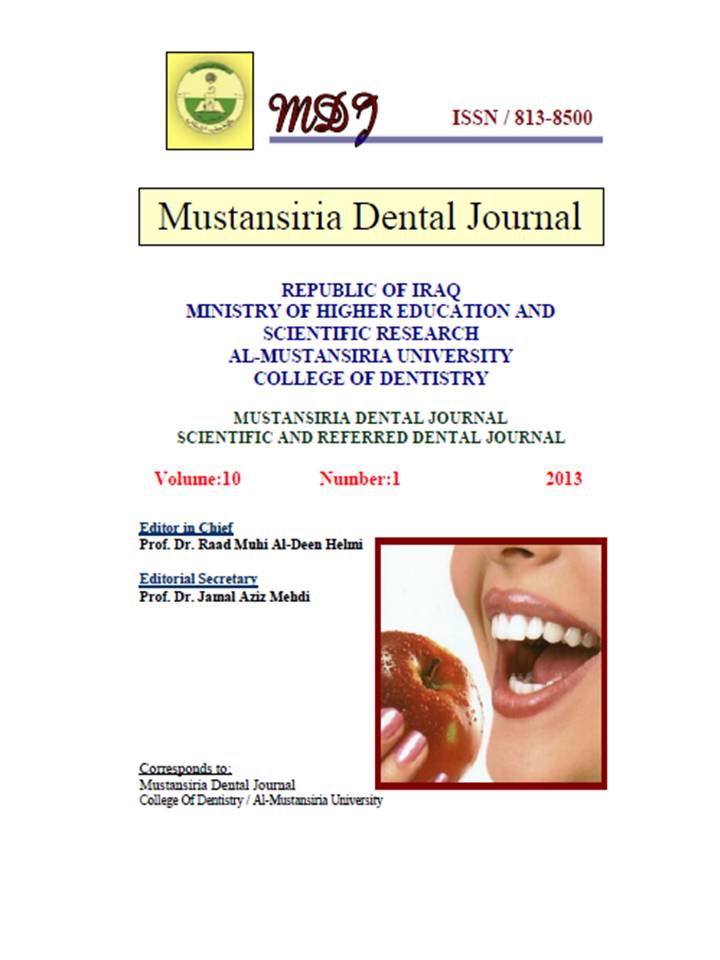Prevalence of oral mucosal lesions in patients attending college of dentistry – Basrah University
DOI:
https://doi.org/10.32828/mdj.v10i1.200Keywords:
Keywords: Oral mucosal lesions, Oral diseases, prevalenceAbstract
Background: The aim of study was to find out the prevalence of oral mucosal
lesions in patients who are attending the oral diagnosis department of the College
of Dentistry – Basrah University and compare it with the prevalence rates of
these lesions in other parts of Iraq.
Materials and Method: Oral examination of 2318 outpatients, 1202 females (51.8%)
and 1116 males (48.2%). The patient's age ranged between 9-74 years. All the
patients of this study referred to oral diagnosis department, College of Dentistry,
Basrah University seeking for dental treatment (from October 2010-May 2011).
Results: Among the 2318 patients, only 206 patients (8.8%) had oral lesions. 115
males had oral lesion constituted 4.9% of total examined patients, while 91
females had oral lesion constituted 3.9%. The age range of the patients was
between 9-74 years.
Oral lesions were more prevalent among males (4.9%) than females (3.9%), and
there was significant statistical difference between males and females. Oral
lesions were classified according to the following 4 categories: ulcerated lesions
(3.84%), benign lesions (2.93%) ,white lesions (1.12%) and candidiasis (0.99%),
The most common oral lesion of the studied populations were the ulcerated
lesions, which diagnosed in (3.8%).There were a significant statistical difference
between males and females in the traumatic ulcer, lichen planus, pyogenic
granuloma and peripheral giant cell granuloma.
Conclusions: This study has provided information about the epidemiologic aspects of
oral mucosal lesions that may prove valuable in planning of future oral health
studies.

Downloads
Published
Issue
Section
License
The Journal of Mustansiria Dental Journal is an open-access journal that all contents are free of charge. Articles of this journal are licensed under the terms of the Creative Commons Attribution International Public License CC-BY 4.0 (https://creativecommons.org/licenses/by/4.0/legalcode) that licensees are unrestrictly allowed to search, download, share, distribute, print, or link to the full texts of the articles, crawl them for indexing and reproduce any medium of the articles provided that they give the author(s) proper credits (citation). The journal allows the author(s) to retain the copyright of their published article.
Creative Commons-Attribution (BY)








